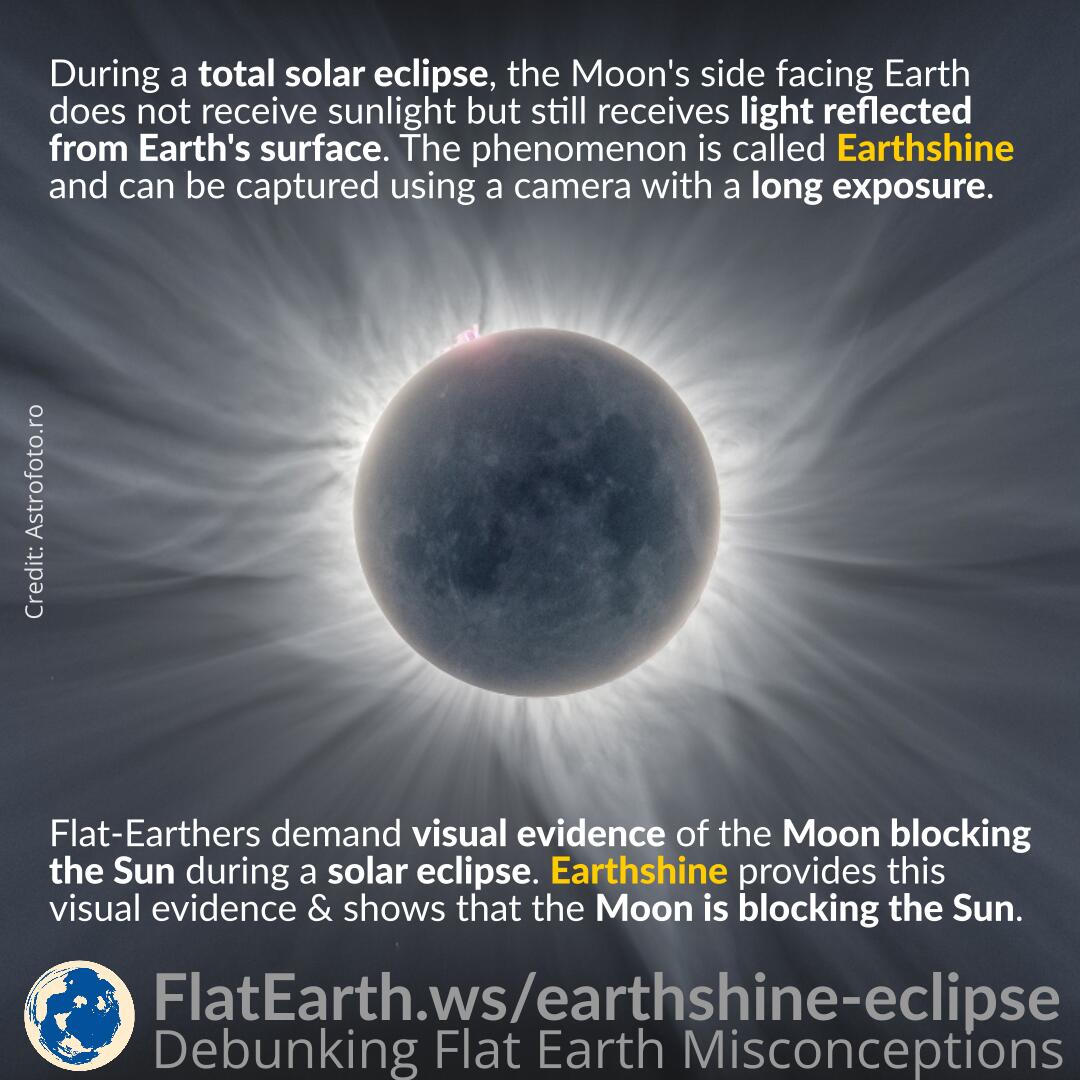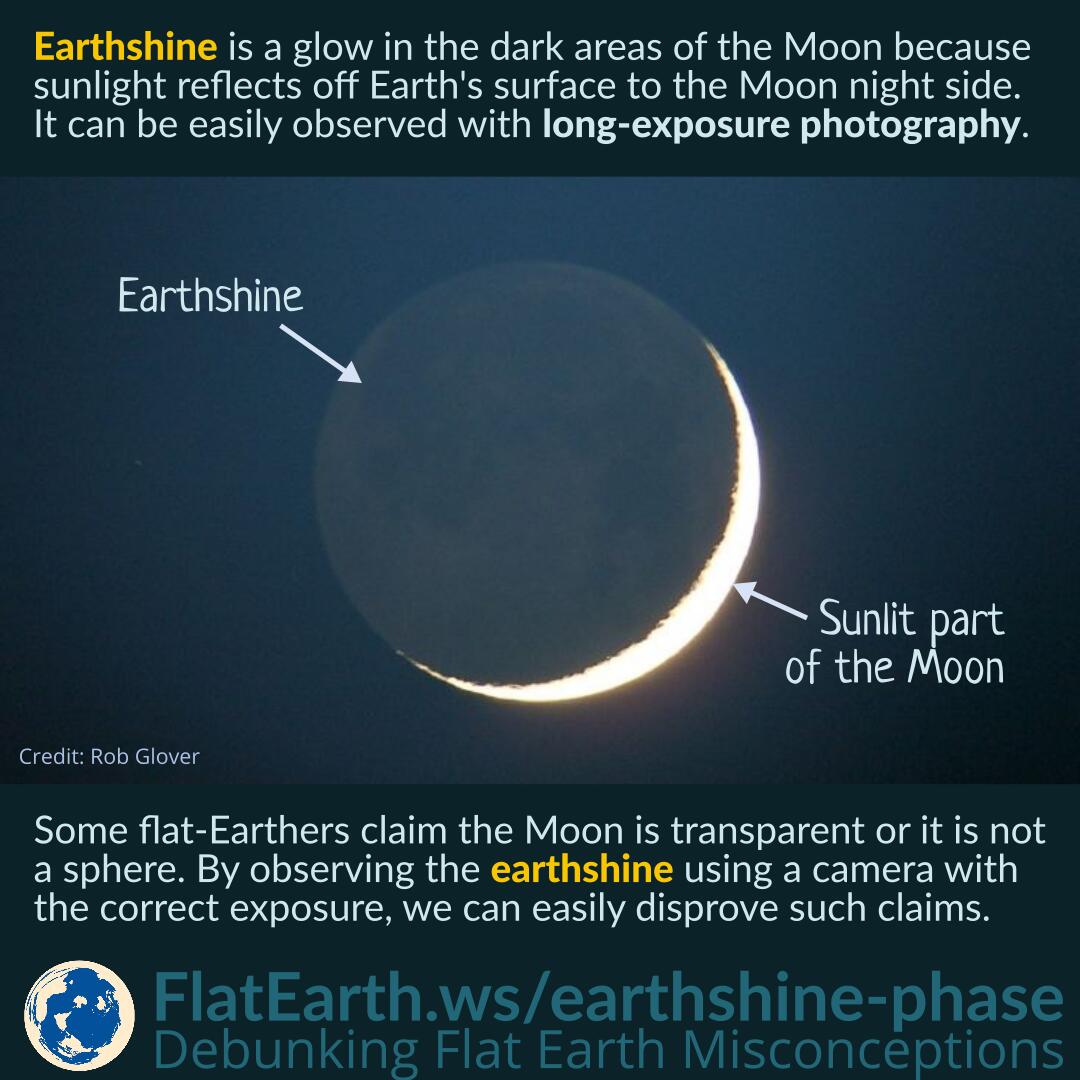During a total solar eclipse, the Moon’s side facing Earth does not receive sunlight but still receives light reflected from Earth’s surface. The phenomenon is called Earthshine and can be captured using a camera with a long exposure.
Flat-Earthers demand visual evidence of the Moon blocking the Sun during a solar eclipse. Earthshine provides this visual evidence & shows that the Moon is blocking the Sun.
Continue reading “Earthshine Shows the Moon Obscuring the Sun During a Total Solar Eclipse”




